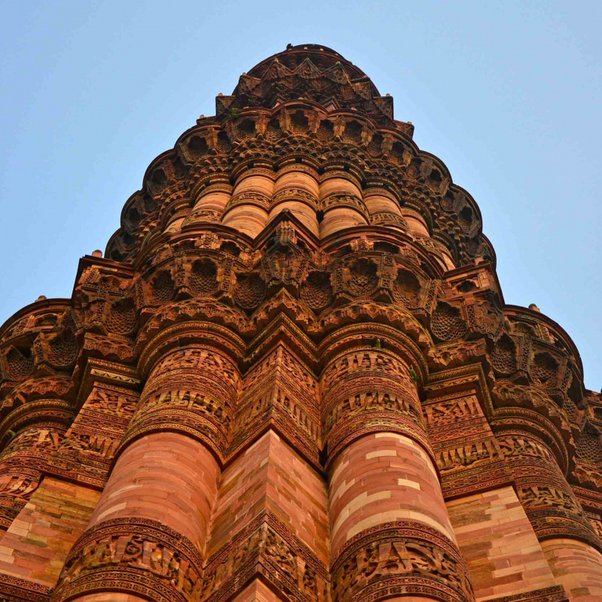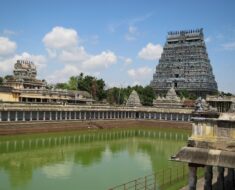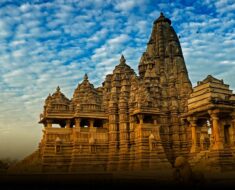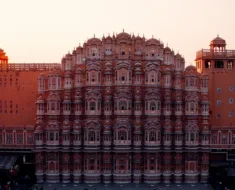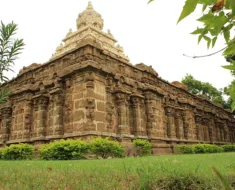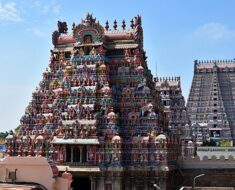The Qutub Minar, located in the Mehrauli area of Delhi is one of the most spectacular sights in the Indian capital.
The Qutub Minar sometimes spelt as Qutb Minar is the tallest brick minaret in the world. It is the second-highest minaret in India. Fateh Burj, in the city of Mohali, Punjab is the tallest tower in India. Standing at a height of 328 ft, dedicated to the establishment of the Sikh rule.
The tallest Minaret in the world is the minaret of the Djamaa el Djazaïr in Algiers, Algeria.
Djamaa el Djazaïr is a mosque also known as the Great Mosque of Algiers. It houses the tallest minaret in the world.
The Qutub Minar is a UNESCO world heritage site.
Here are some lesser-known amazing and interesting facts about the Qutub Minar that you would love to know!
Fact #1 History of Qutub Minar
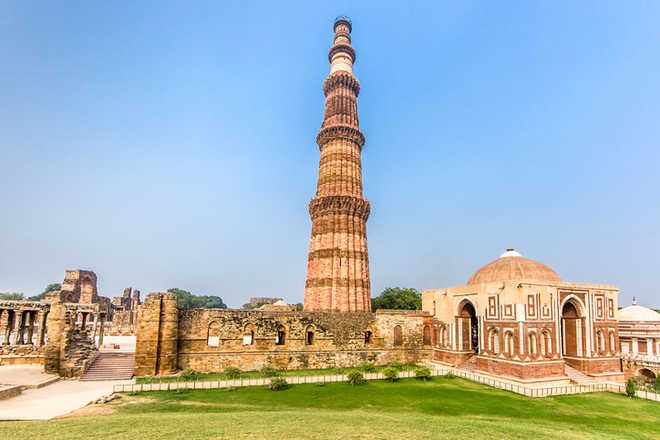
The Qutub Minar was inspired by the Minaret of Jam in Afghanistan. It is an important example of early Afghan architecture which later evolved into Indo-Islamic Architecture.
It was built as a Victory Tower, to celebrate the victory of Muhammad Ghori over the Rajput King, Prithviraj Chauhan, in 1192 AD, by his then viceroy, Qutb-ud-din Aibak.
Its construction also marked the beginning of Muslim rule in India. Even today the Qutub Minar remains one of the most important “Towers of Victory” in the Islamic world.
Built in the 13th century, the magnificent tower stands in the capital, Delhi. The construction of the Qutub Minar was started in 1199 by the founder of the Delhi Sultanate, Qutubuddin Aibak. Three more storeys were completed by Shamsuddin Iltumish, Qutubuddin Aibak’s Successor and son-in-law.
A lightning strike destroyed its top storey in 1369. Firoz Shah Tughlaq replaced the damaged storey and added another one.
The entrance to the Qutub Minar was added by Sher Shan Suri.
An earthquake in 1505 damaged it and was repaired by Sikander Lodi.
A major earthquake again on 1 September 1803 seriously damaged the Qutub Minar.
In 1828, Major Robert Smith of the British Indian Army renovated the Qutub Minar and added a pillared cupola over the fifth storey thus creating a sixth storey.
The cupola was removed by Viscount Hardinge, then Governor-General of India in 1848 and was reinstalled at ground level to the east of Qutub Minar. The pillared cupola is also known as “Smith’s Folly”
Fact #2 Architecture of the Qutub Minar
There are many inscriptions in Parso-Arabic and Nagari characters in different sections of the Qutub Minar. These inscriptions reveal the history of its construction and the later restorations and repairs by Firoz Shah Tughluq (1351–89) and Sikandar Lodi (1489–1517).
The Qutub Minar is a 72.5 m (237.86 ft.) high tower made of red sandstone and marble. It has a diameter of 14.32m at the base and about 2.75m on the top.
The Qutub Minar is not only the highest brick minaret in the world but also one of the most famous historical landmarks of India.
It has five distinct storeys, each marked by a projecting balcony.
The first three storeys are made of red sandstone. The fourth storey is made of marble and is relatively plain and the 5th storey is made of marble and sandstone.
The flanges are made of dark red sandstone and are engraved with Quranic texts and decorative elements. The tower contains a spiral staircase of 379 steps.
Qutub Minar was an inspiration and prototype for many minarets and towers built after it.
The Chand Minar and Mini Qutub Minar bear a resemblance to the Qutub Minar and were inspired by them.
Read More: Taj Mahal – The Symbol of Love – Shah Jahan – Mumtaz Mahal
Fact #3 Qutub Minar Name Confusion
Qutb ud-Din Aibak was the founder of Turkish rule in north-western India. He was also the first Sultan of the Mamluk Dynasty in Delhi.
He started the construction of Qutub Minar in 1192 AD.
Qutb ud-Din Aibak dedicated the minaret to the Muslim Sufi mystic, saint and scholar of the Chishti Order, Qutbuddin Bakhtiar Kaki.
Different beliefs surround the origin of the minaret. Some sources believe it was constructed as a tower of victory marking the beginning of Muslim rule in India while some sources say that it served the muezzins who called the faithful to prayer from the minaret.
Uncertainty hovers around the naming of the tower also with some suggesting it was named after the Sufi saint, Qutbuddin Bakhtiar Kaki while others believe it was named after Qutb ud-Din Aibak himself.
💡 Read More: 15 Must-Visit Historical Places in India
Fact #4 The Qutub Complex

The Qutub Complex has many other important monuments and buildings apart from Qutub Minar such as the Iron Pillar, the Alai Darwaza, Quwwat-ul-Islam Mosque, the tombs of Iltutmish, Ala-ud-din Khalji and Imam Zamin; the Alai Minar etc
Many successive rulers, including the Tughlaqs, Alauddin Khalji and the British added structures to the Qutab complex.
Iron Pillar

The complex has an ancient Iron Pillar of the 4th century. The Ashoka Iron Pillar is about 1600 years old and is one of the world’s prime metallurgical curiosities.
The Iron Pillar was originally erected by Chandragupta II Vikramaditya around 402 AD in front of a Vishnu Temple complex at Udayagiri.
In the 10th century, Anangpal Tomar the king of the Tomara dynasty shifted it from Udayagiri to Delhi. He had built a Vishnu temple and wanted the Iron Pillar to be a part of it.
The pillar is 7.21 meters high and weighs more than six tonnes. It has inscriptions in Sanskrit in Brahmi script. It is made of 98 per cent pure wrought iron and is a testament to the high level of skill ancient Indian ironsmiths had even at that time.
Quwwat-ul-Islam Masjid
Quwwat-ul-Islam mosque means the might of Islam, the mosque is also known as the Qutub Mosque or the Great Mosque of Delhi.
It was constructed by Qutb ud-Din Aibak in 1193.
The mosque was built over the ruins of 27 Hindu and Jain temples. It was the first mosque built in Delhi after the Islamic conquest of India
The conqueror entered the city and its vicinity was freed from idols and idol-worship; and in the sanctuaries of the images of the gods, mosques were razed by the worshippers of the one God.
— Quṭb al-Dīn Aibak’s chronicler, Hasan Nizami, Taj-ul-Maasir
Alai Darwaza

The Alai Darwaza was built by Ala-ud-din Khalji in 1311 AD and It is the main gateway from the southern side of the Quwwat-ul-Islam Mosque.
The Alai Darwaza is decorated with red sandstone and marble. It has inscriptions in Naskh’s script.
Alai Darwaza displays the exceptional skill and craftsmanship of Turkish artisans. It is the first building in India that employed Islamic architectural principles in its construction and ornamentation.
It is considered to be one of the most important buildings built in the Delhi Sultanate period.
Fact #5 Accident
Access to the top floor of the Qutub Minar was stopped due to no. of suicides committed by people. The general public was only allowed to access the first of the tower.
On 4 December 1981, a major accident happened inside the tower due to a power failure.
Around 45 people were killed in the stampede and most of them were schoolchildren. Since then the entry to the inside of the tower has been closed.

